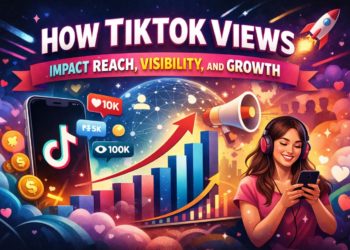Introduction
Rebranding entails among other steps a possible change in name, logo, symbol, and product of an existing brand. Rebranding a company might help it establish a new image in the minds of its customers, and its main purpose is to stimulate the market and accommodate new features. However, changes like these may trigger unexpected reactions.
Rebranding is a difficult task, there’s no disputing that and it can take a long time to figure out the best way to represent your brand as it evolves, especially if it’s a well-known brand. However, nailing a rebrand can get a business to be as successful as some of the leaders in the market, even in the most competitive markets such as the online casino one.
Nevertheless, how can we assure that the bulk of the reactions to the rebrand are positive? Is it possible for us to catch the consumer’s attention while also introducing new ideas that will excite them? The focus in this article is on how Airbnb, Burberry, Apple, and Domino’s all handled their rebrands.
Airbnb.
In 2014, Airbnb released a new look for its brand that changed its colour palette, fonts, and logo. Founder and CEO Brian Chesky wanted to make Airbnb a superbrand by making it distinguishable while continuing to pursue its growth and market value.
Initially the company faced widespread criticism, parodies, jokes, as some said that the new logo resembled a part of the female anatomy. Airbnb eventually overcame this hurdle by assessing the scandal and refraining from any irrational response. In addition, they created a “Bêlo” video that describes their logo concisely and cleared the air. The Airbnb rebrand is a clear example of how some changes may unexpectedly produce a different reaction than expected.
Burberry.
As the market changes, so must every brand. In 2018 Burberry launched its revamping campaign, however, this was not their first time rebranding.
Burberry has been through some hard patches that necessitated a shift in public perception of the company. In the late ’90s, the brand was associated with gang attire, despite how outlandish it may sound today. Soccer hooligans embraced the synonymous Nova Check as their uniform of choice, and this eventually led to bars denying entry to those who wore it. As a result, damage control was necessary for the early 2000s when Burberry was on the verge of losing its luster and exclusivity.
Appointing Riccardo Tisci as a creative director of Burberry was a timely decision as the company was in dire need of a change. He established a new visual language in which the new Burberry logo appeared for the first time, giving the brand it’s push into the mainstream market.
Apple.
Rebranding may seem like too great of a risk for an established company such as Apple. However, in its earlier days, a rebranding was just what the company needed. The year was 1997, and Apple was losing money while Microsoft was dominating the computer market. In August of that year, the stock of Apple was trading at 77 cents when Steve Jobs returned to the board.
In 1998, Apple unveiled the iMac, a stylish and functional computer, which featured for the first time its new logo. The rest is history, and we all know how dominant the Apple brand went on to become. As of this article, Apple’s stock is trading at more than $160 per share, thanks to its new products and brand image.
Domino’s.
“Perception vs. reality” is a common problem that Domino’s had to deal with. “Tastes like cardboard” were common jokes which were made in association to Domino’s due to its reputation. Even the simple “delivered in 30 minutes or less” claim didn’t help much.
Domino’s and Chuck E. Cheese came in dead last in a 2009 consumer taste poll. When this happened in late 2009, the Domino’s Pizza Company declared its plan to reinvent itself, starting from the quality of their pizza. For this reason, Domino’s emphasized honesty in its marketing and advertising campaigns. Domino’s CEO Patrick Doyle led the charge in exposing the company’s own flaws and mistakes. When Domino’s new “Pizza Turnaround” launched in 2010, employees from the firm began actively participating in the messaging of consumers.
Brutal honesty can be painful. However, as we’ve seen with Domino’s, this strategy can pay off, as evident by the 75% increase in Domino’s stock price by October 2011.
Conclusion.
The goal of rebranding is to improve the company’s image and broaden their reach in the market. However, one must always expect the unexpected. Just like with Airbnb, if a rebrand is not received well, it must be reassessed, and a course of action must be established. Apple launched its new branding with a new product, while Domino’s used brutal honesty to admit its own faults and move past them. As a result, these organization’s branding was tremendously successful.









































































